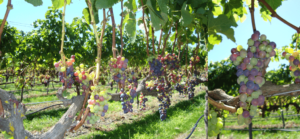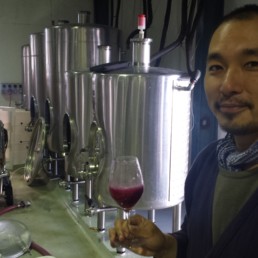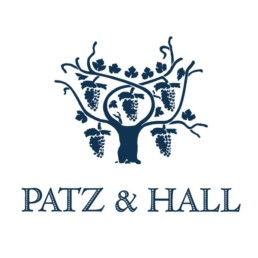Hi Julianne, Can you tell us what is happening in your vineyard at the moment?
Currently the vines are in the final stage of ripening before harvest. The canes of the grape vines change colour and structure from a fleshy, green to brown and hard. ‘Veraison’ a french term used to describe the ‘change of colour of the grape berries’ is underway and usually takes between 40-50 days.
Berries change from small and green to almost doubling in size as sugars accumulate, organic acids decrease and the berries soften and turn to a red/black or a yellow/green. The change in colour is due to the replacement of Chlorophyll, which is green to the human eye in exchange for anthocyanins in red grapes and caratenoids for white grapes……if you can remember back to those Chemistry days??
What do you look for in terms of ripeness?
As I walk the blocks I think about the final wine, how do I want it to taste, flavours, acidity, richness, complexity. For Collaboration Wines, each vineyard site is chosen for a reason be it clonal, site selection or soil, all these factors will affect the grapes at picking and in turn the final wine.
I look and feel the softening of the berries, taste the flavours which can be variable from row to row or vine to vine. I shake the vines to see how vulnerable the grapes are, do they fall off easily or are they hanging in there and finally, I sample the berries uniformly across the block and take the grapes to the lab. The grapes are dejuiced using a strainer, and the juice is extracted from the skins. I look at the percentage of brown to green seeds, smell the skins and look at the colour of the juice.
I test for sugar levels and acid levels, these results will give me a guide to the final alcohol and potential acid in the resulting wine once fermentation has occurred in the winery.
Finally, I go on gut feeling and experience.
How does this vintage look in terms of ripeness and quality thus far?
Coming up to my 23rd vintage and I as far as I’m concerned we are in the hands of mother nature, the weather can change at the drop of a hat! 4 weeks ago I would have said we are behind and late for what would be considered a normal season . Now, with intense heat over the last couple of weeks, veraison has rocketed through and we are looking to be back on schedule. If the warm dry weather continues as predicted we could be looking at another stunning vintage. But, who knows a cyclone may come through, or extreme humidity, a snap of cold weather and the game changes, we are forced to pick dependent on the weather. If anything I’ve learnt just go with the flow and learn from experience and be prepared with your bag of tricks. The only factor that is consistent is the person that guides the wines but even then we are for ever learning and evolving.
What are some of the viticultural techniques you apply that influence fruit ripeness and quality?
Site selection, clonal selection, pruning, shoot thinning, leaf removal, fruit thinning and hand picking are all techniques that are essential to ensuring consistency and quality year after year. For me you need to step back and look at the whole picture and guide the vines and sites accordingly to achieve your final outcome.
What are some of comparisons and contrasts of growing fine wine grapes in Hawkes bay compared to california where you made wine for many years?
8 years winemaking in the Napa Valley and I have to say viticulture and winemaking over there is simpler in comparison to Hawkes Bay. California is spoilt for beautiful, rich, luscious, riper wines year after year, each day seems to deliver calm warm dry weather which makes the jobs both in the vineyard and winery easier. Another side to California is the intense heat day after day which results in climbing sugars and declining acids with physiological ripeness and flavours not in balance. High sugars and thus high alcohols are the outcome, definitely a challenge in itself. In all, California Wines are in a league of their own and I certainly developed a love for these wines. The depth of knowledge and experience in Napa Valley is impressive and I appreciate the layers of complexity that California offers.
Hawke’s Bay’s weather is more variable which can pose challenges so we need to be ready to deal with the various weather patterns and accommodate both in the vineyard and winery. Hawke’s Bay obtains physiological ripeness of the grapes at lower sugar levels meaning lower alcohol levels in the wines. The result is beautiful elegant wines, lovely acidity, richness and elegance that suits an array of cuisines.
For a young region and country in the world of wine, we are fast to learn and accommodate both in the vineyard and winery. In comparison the vineyards and resulting wines are just as good as California but a fraction of the price and Hawkes Bay wines like California certainly reflect their own sense of place.
Fingers crossed – I’m looking forward to seeing what challenges the 2016 Harvest brings to Hawkes Bay and Collaboration Wines.
Current vintages:
2011 Argent Cabernet Sauvignon
2012 Impression Red
2013 Ceresia Merlot Cabernet Franc
2014 Aurulent Chardonnay



